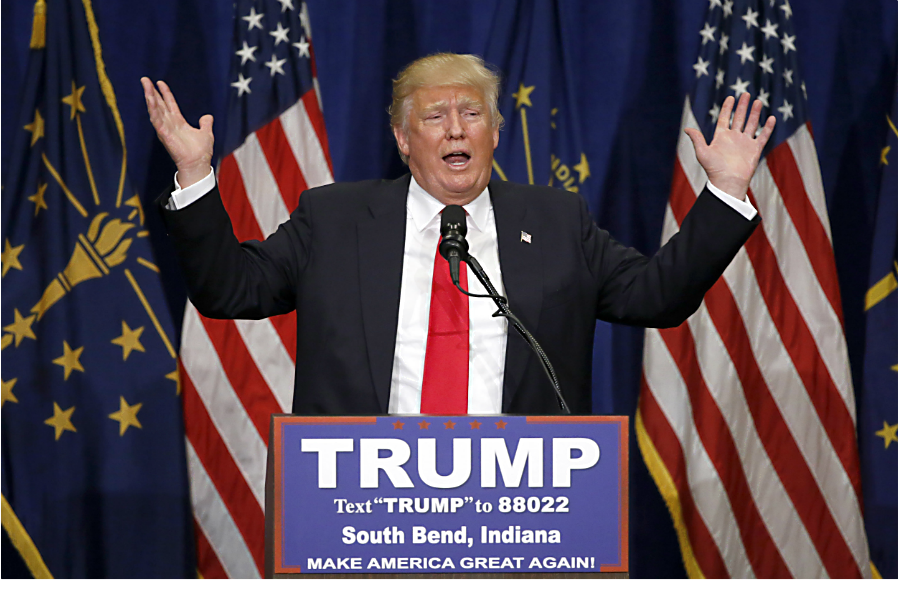The Donald Trump story, revealed in three polling trends
Loading...
| Washington
With Donald Trump on the cusp of becoming the presumptive GOP presidential nominee, we went back for a nostalgic look at the RealClearPolitics rolling average of major Republican polls to see how the billionaire real estate TV star got here.
Polls are just numbers. They don’t say anything about the nature of Trump’s appeal, or the missteps of his opponents. But the creeping colored lines of the RCP graph led us to at least three conclusions.
HE WAS ALWAYS WINNING. On July 16, 2015, Jeb Bush (!) led the RCP average of GOP candidates with 15.5 percent of the vote. That was the day Donald Trump announced he was actually going to run for president this time around.
On July 20, Trump surged ahead of Bush for the top spot in the polls. He has not relinquished it since, with the exception of several days last November when Ben Carson led.
Trump’s wide and persistent plurality lead shows pollsters didn’t miss his rise. The punditocracy did, us included. The collapse so many expected never came. Instead his poll line marches steadily across the page, always on top.
Remember when he was going to lose because he said Sen. John McCain wasn’t a war hero? That was July 18, 2015 – just about the time he started going up, instead. Since then he’s fought with people up to and including the Pope. Still winning.
BUT HE DIDN’T HAVE THAT MUCH SUPPORT. The blue line that represents Trump’s number isn’t flatly horizontal. It varies considerably up and down. But for the most part it stays within a fairly narrow range of between 25 and 35 percent of the Republican electorate. That was the case from mid-September of last year through mid-March 2016.
That’s only a plurality, and not a big one. As we noted last September, if you do the math that’s about the same number of Americans as believe the moon landings were faked.
Bernie Sanders had a higher percentage of Democrats throughout the same period. The difference, of course, was that Sanders only faced one opponent. Trump faced many. Their lines crisscross beneath his like bumper cars smashing into, and taking out, each other. Trump’s support was enough to keep him safely out of that fray, winning primaries, but with seldom more than 35 percent.
AND NOW SOMETHING’S CHANGED. In mid-to-late March of this year Trump’s line suddenly tilted upwards. It burst past the 40 percent mark, receded a bit, then rose again to its all-time high of 45.4 percent of GOP voters, where it sits today.
That rise coincides with Marco Rubio’s departure. Sen. Rubio dropped out of the race on March 15. Rather than helping consolidate the anti-Trump vote, Rubio’s winnowing seems to have had the opposite effect.
Now Trump is cleaning up. He won the New York primary with 60 percent of the vote on April 19 and five more northeastern states with 50 to 60 percent margins on April 26.
If he takes Indiana today it will become very difficult, if not virtually impossible, to deny him the nomination. He’s already the only candidate able to win outright in anything other than a contested GOP convention. Whatever happens next, that’s quite a rise for someone Huffington Post editors called a “sideshow” last year, when they moved all Trump stories from the news to the entertainment section.








